THE excavations which have been conducted annually since 1921 at Beisan, the biblical Bethshan, by the Museum of the University of Pennsylvania, were commenced this year on the 25th of August, and will continue until the rainy season begins early in January. My staff consists of Mr. H. J. Hine, Chief Archæological Assistant, Mrs. Alan Rowe, Assistant, Miss D. Boulton, Artist, Mr. C. Haiat, Secretary, Ahmed Effendi Abdel Aziz and Nicola Effendi Manasseh, Surveyors, Ahmed Effendi Osman, Draughtsman, and Fadil Effendi Saba, Photographer.
The work has hitherto been confined to Tell el-Hosn, or the Mound of the Fortress, in which at least eight main levels have been identified, ranging in date from just before the time of Amenophis III to early Arabic times, a period of over thirty-three centuries. This season’s excavations have been carried out in all the levels, namely (1) Pre-Amenophis III, lower and upper strata; (2) Amen-aphis III, two strata (1411—1375 B.C.) ; (3) Seti I, two strata (1313—1292 B.C.); (4) Rameses II (1292—1225 B.C.); (5) Late-Ramesside, Philistine, Israelite, Assyrian, Scythian, New Babylonian, Old Persian, etc. (1224-302 B.C.); (6) Hellenistic, Jewish, Roman (301 B.C.—329 A.D.); (7) Byzantine (330 A.D.—636 A.D.); and (8) Arabic, Crusader, etc. (636 A.D.—XIXth century). The base of the upper stratum of the Pre-Amenophis III level at the south of the tell is about 37 feet below the top of the Arabic or latest level, and in order to give some idea of the extent of the walls, debris, etc., yet to be removed, it may be mentioned that the original height of the mound, at the south, was 134 feet, and at the north, 213 feet. The base of the mound itself, from northeast to southwest, is about 900 feet in length. The top of the Arabic level was 346 feet below the level of the Mediterranean Sea.
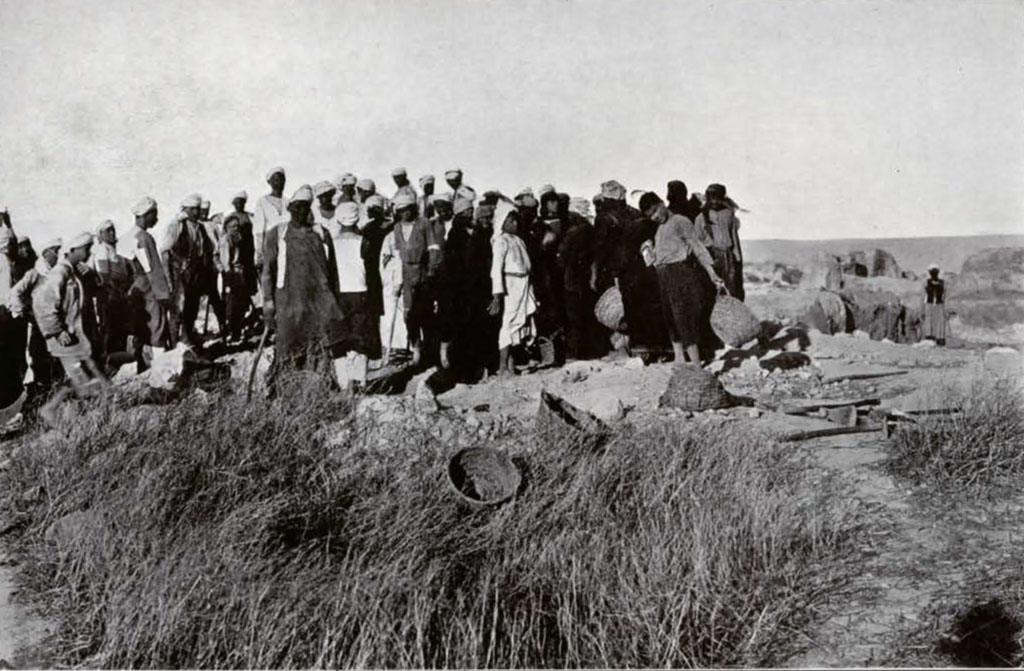
In addition to two new temples, which bring the number of Canaanite temples found on the tell up to six, our present excavations have yielded some objects of great importance, which include a doorjamb showing the portrait of the actual builder of the temple of Dagon referred to in I Chronicles, x, 10; bricks bearing the impressions of the feet of a child, a dog and a gazelle, and a pot handle inscribed with archaic Mediterranean linear signs. I shall describe the finds in chronological order, commencing with the oldest level.
Pre-Amenophis III Lower and Upper Levels
Although we have not yet actually identified these two levels, we are certain that they belong to the period immediately preceding Amenophis III (1411—1375 B.C.), as they are just under the level corresponding to his period. What we term the upper Pre-Amenophis III level was cleared in 1926, but not much was found in it. Some most interesting objects, however, have just come from the provisionally named lower Pre-Amenophis III level, among which must be mentioned a large four-handled pottery bowl, two feet in height and two feet in diameter; a great quantity of beautifully decorated pottery, mostly Eastern Mediterranean in origin; a part of a pottery cylindrical cult object with triangular holes; a scarab bearing the inscription “The god Amen causes (one) to live ;” a painted pottery lion’s head from a vase or cult object; a small pottery model of an offering stand; a model of the Peshesh-kef implement used by the Egyptians in connection with their “Ceremony of Opening the Mouth” of the mummy in the tomb; and two amulets in the shape of the “Buckle of Isis,” which, according to Chapter CLVI of the Theban Recension of the Book of the Dead, was supposed to afford the protection of the goddess to the possessor.
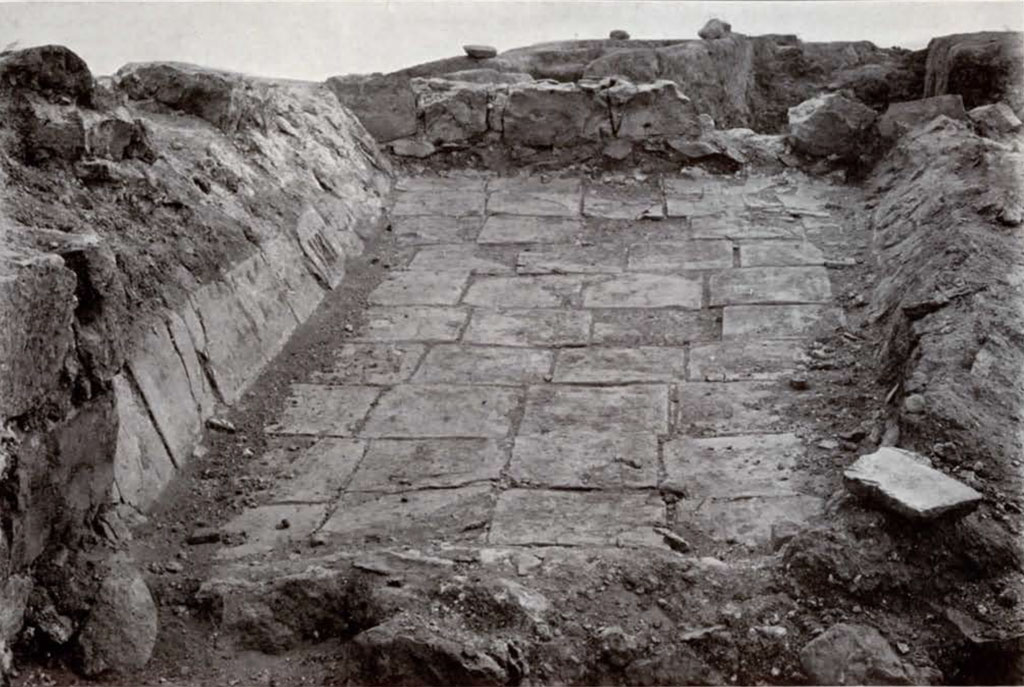
Image Number: 30061
Palm Tree Trunk
In the debris near a stone threshold in the southern part of the same level, there was found a portion of the trunk of a date palm, very much blackened by decay. This trunk has a great interest for us, as it surely indicates that there were palm trees in Beisan so far back as 3400 years ago. At the present time there are practically none. According to early writers there were plenty of these trees in Beisan in the Byzantine and Early Arabic periods. For instance, Sozomen, the historian, states that in Byzantine times there were a great number of palms in Beisan, from the leaves of which the monks made baskets. The Arab writer Tirmidhi, who died in 892 A.D., writes: “Give me information of the palms of Beisan which is between the Jordan and Palestine. Are their dates not the most tasty?” Mukaddasi (Xth Century) says that from Beisan came both indigo and dates. The Russian abbot, Daniel, who visited Beisan in 1106 A.D., writes that “thick groves of date trees grow in the town.” Palms were practically no longer to be seen in Beisan in the XIIIth century, for when Yakut, the Arab geographer, visited the place, he wrote: “I, who have been there many times, never saw more than two palm trees there, and those of the kind that gives dates one year and no more.” The German explorer Seetzen, who visited Beisan in 1806, records the finding of only one date palm, “and that is wild and with a short trunk.”
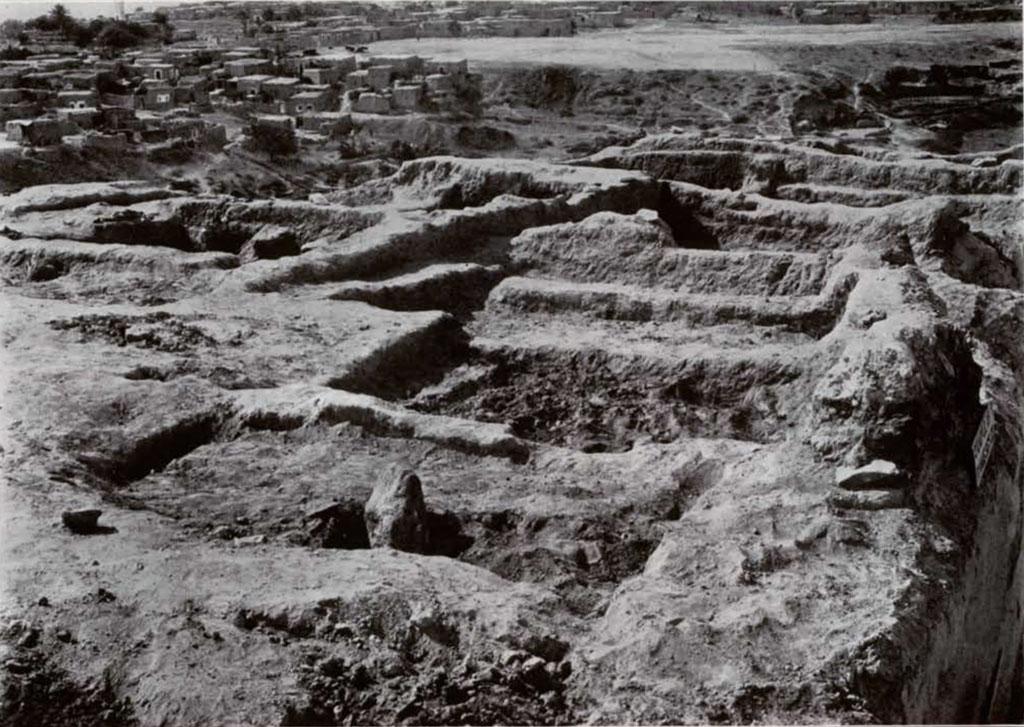
Two New Canaanite Temples
At the extreme northern end of the area excavated in the mound, in the lower Pre-Amenophis III level, we are now engaged in excavating two newly discovered Canaanite temples, a northern and a southern. The excavation of these temples is progressing very favourably and many important details throwing new light upon Canaanite sanctuaries of the beginning of the XVth century B.C. and, incidentally, upon certain passages in the Old Testament, have come to hand.
From various indications it would appear to be almost certain that the temples belong to the reign of Thothmes III, 1501-1447 B.C., who died thirty-six years before Amenophis III, the builder of the Canaanite temple in No. VII city level, came to the throne. A scarab showing the figure of a bull and giving the name of Thothmes HI has actually been found on the floor level of a room just to the west of the southern temple.
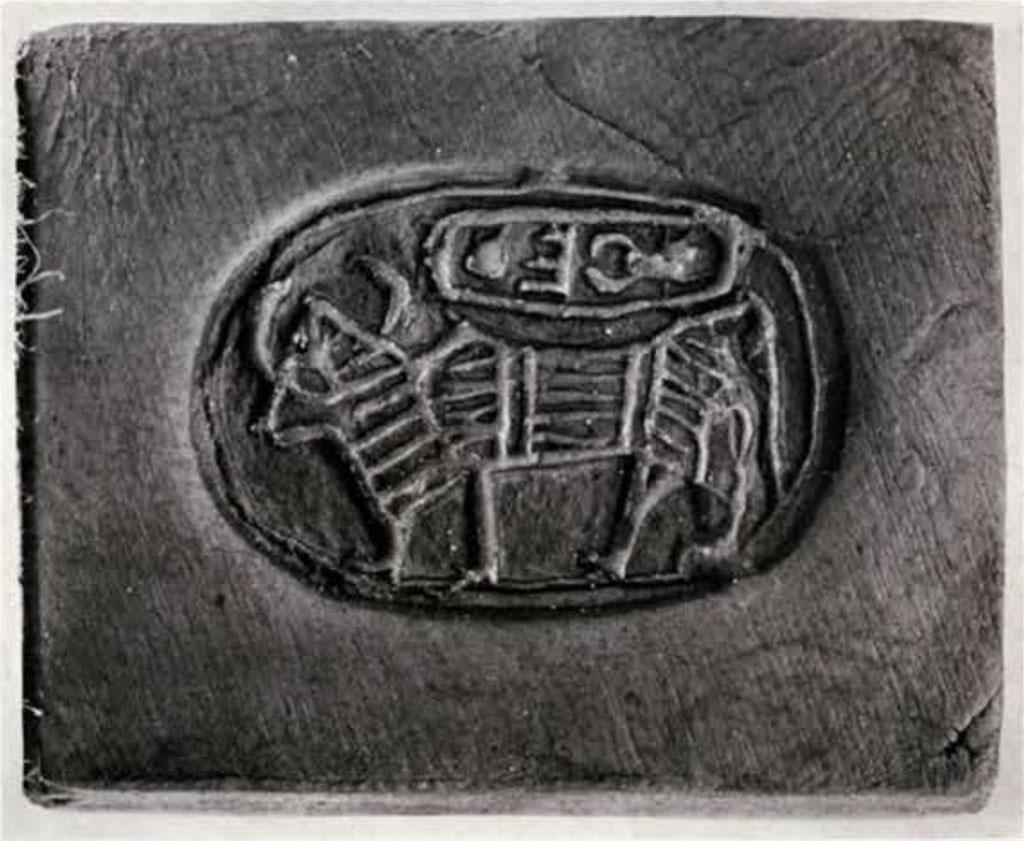
Image Number: 30188
Southern Temple of Thothmes III
The whole of the southern temple, with the exception of strips along the eastern and western parts, having been cleared, we are at present in a position to obtain a general idea of its appearance. We had formerly thought that the axis of the temple ran from west to east, but we now see that, like the axes of the temples of Amenophis III and Seti I, it runs from south to north, or, in other words, the door of the inner sanctuary of the temple is at the south end of the building and the inner altars are towards its north end.
So far as can be ascertained at present, the temple consists of: (I) An inner sanctuary with two altars, (2) a room with the altar of sacrifice, which is situated to the south of the sanctuary, (3) a corridor to the south of the sacrificial room, the significance of which is not yet clear, (4) a large courtyard to the west of the sanctuary and the sacrificial room, with a small anteroom at its northern end, and with a room which we believe to be a small stable for the sacrificial animal, and the socket of the pole for dressing the carcass, at its eastern end, (5) a room to the north of the sanctuary, (6) a corridor to the north of the anteroom of the courtyard leading to the northern temple of Thothmes III, and (7) a room to the west of the latter corridor. The more important of these rooms can be seen quite clearly on the photograph of the southern temple shown on page 421, which gives a good idea of their relations to one another. The length over all of the temple from south to north is 117 feet. What the west-east distance is, we, of course, do not know at present, but the excavated width is 58 feet.
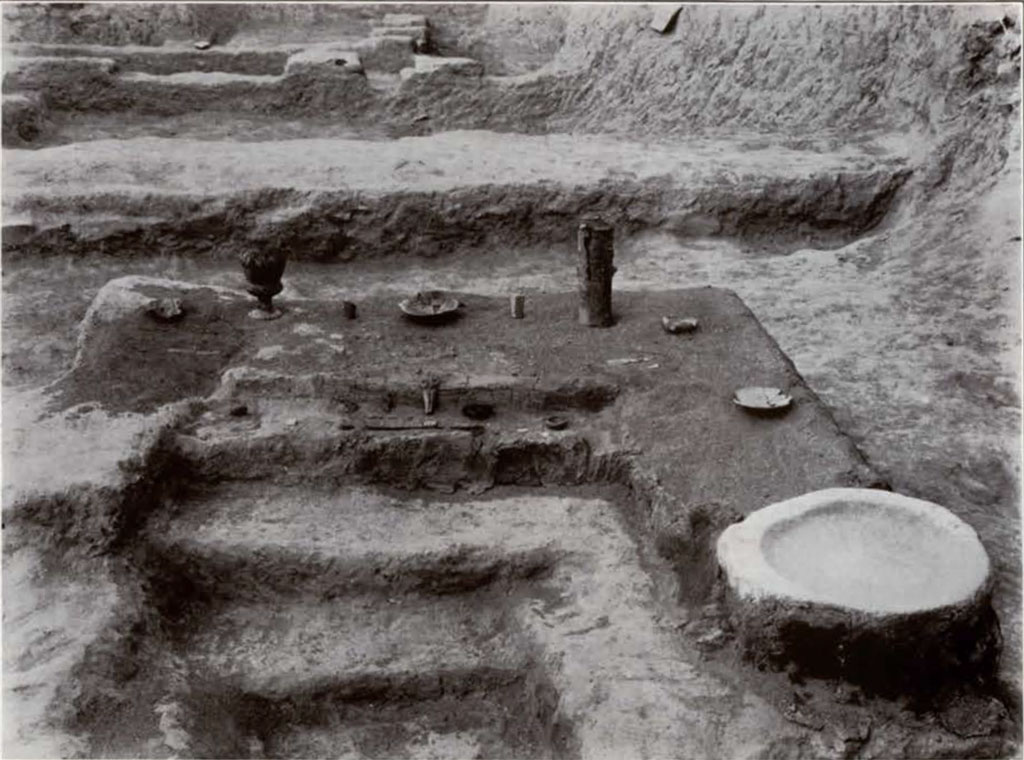
Image Number: 30169
The Inner Sanctuary
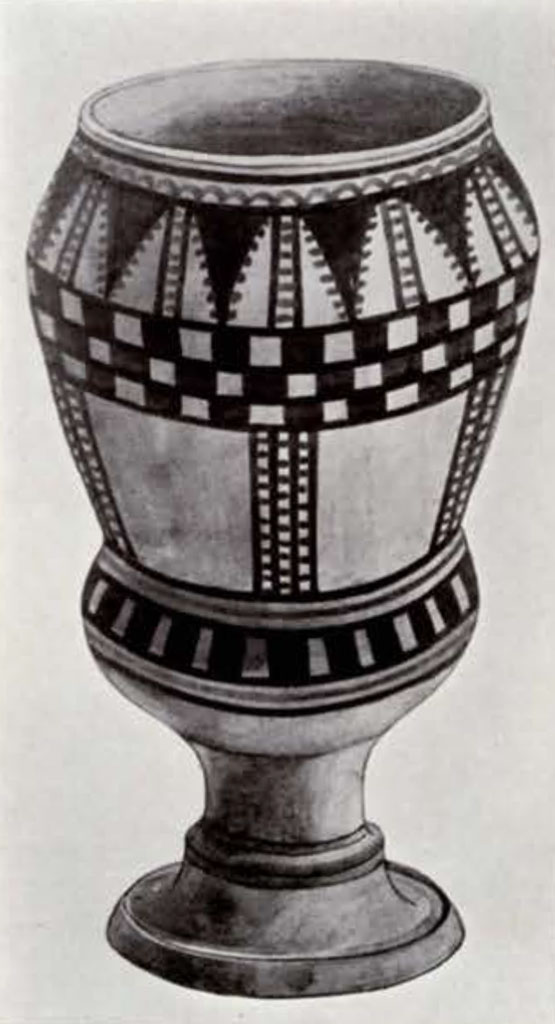
The inner sanctuary, divided into two compartments by a central brick altar and a short wall connecting the altar with the west wall of the sanctuary, has an interior measurement from south to north of 46 feet. Leading up to the altar, and on its south side, is a flight of three steps, while on a small wall at the right of the steps is a shallow stone basin which may have held blood offerings for the deity. It seems fairly obvious that the altar, which is 22 inches in height, was used chiefly as a table for the various sacred objects, jewellery, beads, etc., which were found lying on the ground around it. The finest object is a libation cup on a pedestal base; this cup, which has a hole in its base, is decorated with dark purple-red designs on a red background, and is a little over ten inches in height. Near the cup was lying a two-handled cylindrical cult object, open at the base and top, and over 18 inches in height. On the floor east of the altar was discovered a well made figurine of the goddess Ashtoreth, with the head missing. Dotted incisions on the front of the figurine may represent a garment or perhaps tattooings of a ritual character. The arms of the goddess almost encircle her breasts, while her body has a very slight inclination to the right, which gives a suggestion of animation to the figurine. Near the altar were also found a beautiful ivory cosmetic pot with a stand base; beads, ornaments, amulets, etc. ; and the shoulder blade of a young bull. This last object is most important as it forms part of an animal sacrifice made in the temple, to which we shall refer later on. A dagger with a curved end which is very much like that worn by a king represented on a gateway in the Hittite capital of Boghazkeui in Anatolia, a gold covered figurine of a god, a lapis lazuli scarab of Sesostris I, and an ivory plaque representing a seated man were also found near the altar.
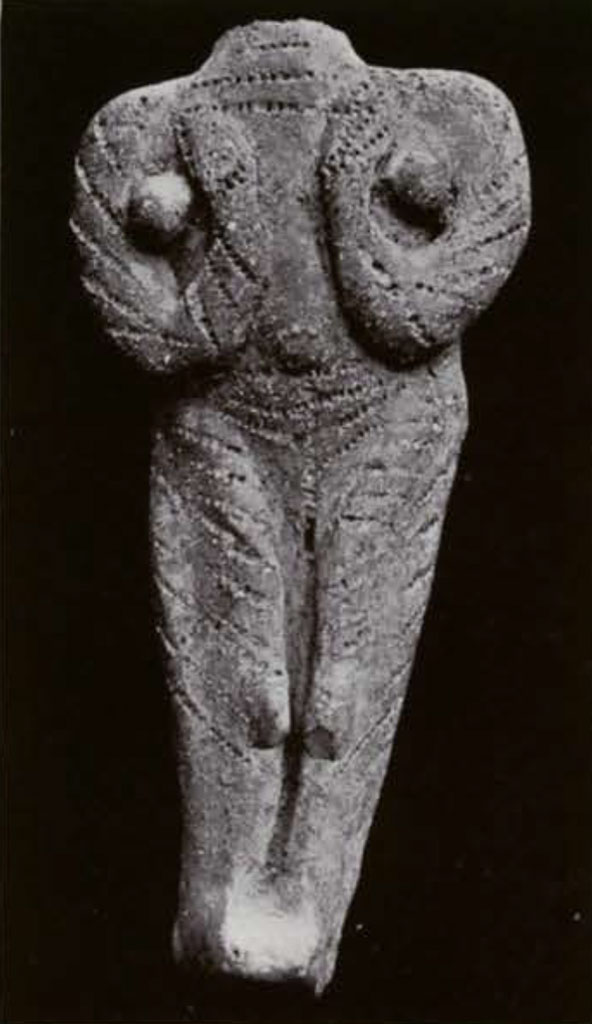
In front of the brick altar and within the sanctuary is another altar, some 12 inches in height, which is made out of two pieces of stone. Upon this stone altar were probably laid the cooked meat sacrifices which were offered up to the deity. So far as can be seen at present the only entrance to the sanctuary is the door at its southwestern corner, near the altar of sacrifice.
From the southern side of the sanctuary came part of a clay brick bearing a curved line impression, evidently the maker’s mark, and two fragments of an Egyptian green glazed faience bowl. One of these fragments has the legs and part of the garment of a man painted on it, while the other bears a few hieroglyphic signs, the meaning of which is not clear as they form only parts of words. A determinative, showing a seated god, however, indicates that the name of some god is mentioned. After the determinative is written the word ba . . . At the time of writing we have just discovered some pedestals of brick upon the northern wall of the sanctuary.
This sanctuary of the great southern temple of Thothmes III is but an earlier type of the sanctuaries of Amenophis III and Seti I in the upper levels. The later sanctuaries, however, had the northern altar erected in a room raised above the level of the room in which the southern altar was placed, and also had a small mastaba, or seat, running partly round the lower room. Furthermore, in the lower room itself were two columns for a roof, but no traces of any columns have so far been discovered in the Thothmes III sanctuary. The two temples of the time of Rameses II at Beisan were erected in a style altogether different from that of the older temples mentioned above and cannot be said to have evolved from them.
Room with Altar of Sacrifice

Museum Object Number: 29-108-364
Image Number: 30180
The room with the altar of sacrifice, as has already been observed, is just to the south of the inner sanctuary, from which it is divided by a thick wall. The sacrificial altar is built against the west end of this wall and has two steps leading up to it from the entrance passage of the sanctuary. On top of the lower step is a rectangular slab of basalt, but whether this came from above the altar or is in its original position cannot be determined. The altar itself is of brick and is about 12 inches in height. In the top of it is a channel, 8 inches in width and 8 inches in depth, in which the blood from the sacrificed animals was carried away to an outlet at the east of the altar, where the fluid was caught by some kind of receptacle, doubtless a pottery vessel. In the southern side of the longer part of the channel, which is L-shaped in plan, we discovered a round hole sunk in a sloping position for a little distance under the altar. From this hole came some small pieces of wood. It seems quite certain that in this hole was inserted a wooden peg for the purpose of holding a rope for tethering the animal to be sacrificed. Against the south side of the altar we found two horns of a bull that had been slaughtered upon the altar. A collarbone of a bull, together with a sacrificial dagger of bronze with its handle inlaid with wood, was lying in the court-yard to the west of the altar steps. Doubtless this collarbone and the shoulder blade found in the inner sanctuary, as well as the horns, belonged to one and the same animal, which was probably the last to be sacrificed in the temple. The bull, as shown by the skeletal remains, was about three years old, and in this respect we are reminded of the bullock of three years that was offered up by Hannah in the “house of the Lord” in Shiloh. See I Samuel, i, 24, 25, R.V., margin. Near the place in the courtyard where the dagger and the shoulder blade were found is a long, hard, clay socket sunk in the floor. From this socket came some small pieces of wood and a semicircular piece of plaster, proving that a pole was once placed in the socket. There can be no doubt whatever that the carcase of the bull was dressed upon this pole after the animal had been sacrificed upon the altar close by. In some of the Egyptian funerary documents, as for instance in the Papyrus of Anhai in the British Museum, we see the carcase of a bull suspended from a pole inside a shrine containing the god Osiris. Here the head of the bull hangs downwards and blood pours from the neck of the animal into a pot at the base of the pole.
Very near the pole in the courtyard of our temple was lying a heavy bronze pendant with a suspension loop at its top. This object is about 5 inches in height and 4 r a inches in breadth. On its front is depicted a lion seizing an animal, probably a bull. This pendant must undoubtedly have been suspended from the neck of some large animal, which, we must conclude, was none other than the bull which was offered up from time to time as a sacrifice in the temple. Perhaps the bull had decorations other than this pendant, all of which were placed on the animal on the day of the sacrifice, when it may well have been paraded within the precincts of the temple so that the laity might see it. A small room to the west of the sacrificial altar may have been a stable for the bull.

Image Number: 30187
In the west end of this room is a square pedestal of brick which may either have supported a post for a roofing beam or have been used as a stand for some sacred object. A little to the east of the altar is a kind of shallow socket made of clay, the purpose of which was evidently to support the base of a large pottery jar which we found in the room. A fragment of plaster showing traces of blue paint seems to indicate that some of the walls or floors of the temple were coloured. The upper altar room of the temple of Seti I was coloured a bright blue. A pottery libation cup was another important object that came from this room; also a bowl supported by four curved legs attached to a circular stand or base. This bowl, which has decorations in red and black, is quite unique.
Some of the details of this temple are not unlike those of the temple described by the Prophet Ezekiel (VIth Century B.C.). Cf. Ezekiel, xl. The latter building had its altars of sacrifice outside the inner sanctuary and also an altar inside the sanctuary. Indeed, we must assume that there was not a great difference between Israelitish temples of the type referred to in Ezekiel and the temples of the non-Israelitish inhabitants of Palestine, both in the VIth century B.C. and in earlier times.
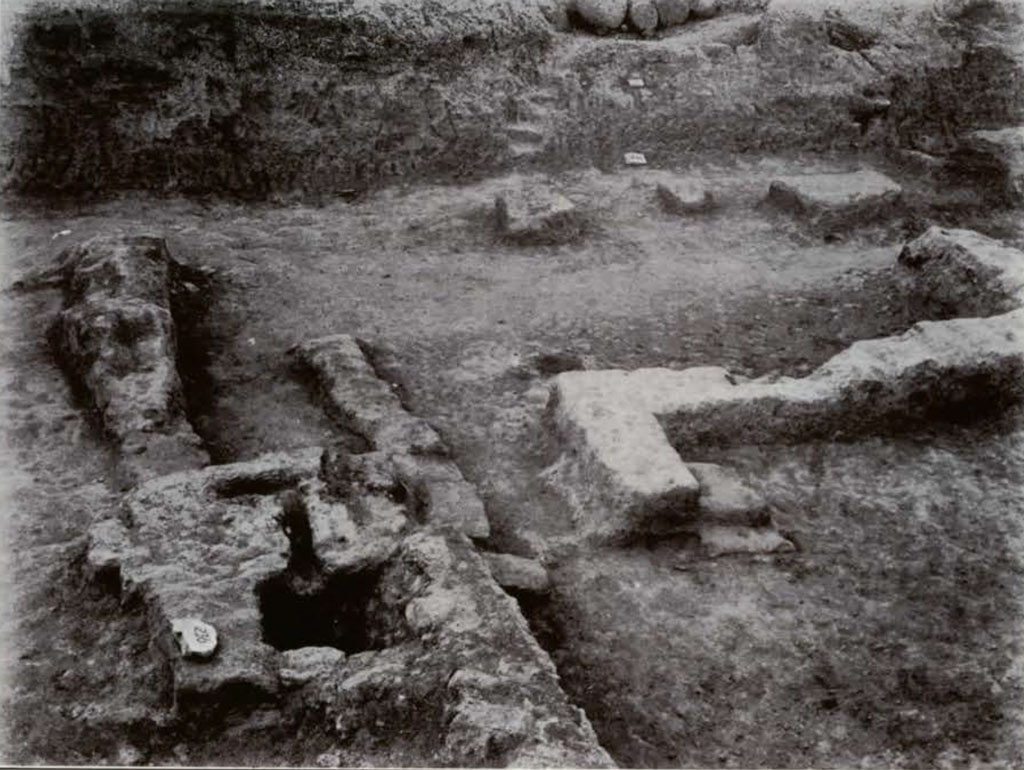
Southern Corridor of Temple
The exact purpose of the southern corridor of the temple will not be known until we have made further excavations along the uncleared strips at the east and west ends of the temple area. So far, no doorway has been found in the corridor. Over a hundred cigar shaped objects of mud, each 3½ inches in length, were unearthed in this place. These are evidently votive offerings and doubtless represent small rolls of bread or cakes. Compare Jeremiah, vii, 17, 18: “Seest thou not what they do in the cities of Judah and in the streets of Jerusalem? The children gather wood, and the fathers kindle the fire, and the women knead their dough, to make cakes to the queen of heaven [1. e., Ashtoreth], and to pour out drink offerings unto other gods.” Two round balls of clay, evidently representing another kind of cake, were found this season near the temple area of the Seti I level. One of the balls had a seal impressed upon it in fourteen places, while the other bore five similar seal impressions. The seal contained the Egyptian word imenyt, “daily offering,” which indicates that the clay cake was a votive offering for providing a daily supply of bread for the deity. This usage has a suggestive analogy to the practice of preparing the shewbread at the sanctuary of Nob, as recorded in I Samuel, xxi, 6, which custom prevailed in Israel not so long after the Canaanite-Egyptian usage of the time of Seti I at Beisan. The daily preparation of the bread in the Seti I instance may well throw considerable light on the periodicity of the renewal of the bread as referred to in I Samuel, where the frequency of renewal is left entirely undetermined.

Image Number: 30168
Courtyard West of Inner Sanctuary
The western limits of the courtyard west of the inner sanctuary not having been cleared, we do not yet know its exact shape. It has, however, a door at its north end opening into an anteroom which is connected with a small corridor leading to the northern temple. The courtyard possesses also an entrance in its east wall leading to the door of the inner sanctuary of the southern temple. In about the center of the courtyard, and in rough alignment from south to north, are two rectangular tablelike structures of brick, with a small square pedestal of brick between them. Upon the two tables, no doubt, were placed those cooked portions of the sacrificed bull which were not offered up to the deity in the inner sanctuary. We may suppose that these portions were eaten in the courtyard by the laity and that the portions for the deity were eaten in the sanctuary by the priests. (Cf. I Samuel, ii, 14, 15, and I Samuel, i, 18, in the LXX. See Driver, Books of Samuel, p. 15.) An actual cooking-place in the courtyard has not yet been found. We noticed a quantity of blackened wood fragments near the pole socket, but these may have been part of the pole itself. The small pedestal between the tables doubtless held the implements with which the flesh was divided. Cf. Ezekiel, xl, 42.
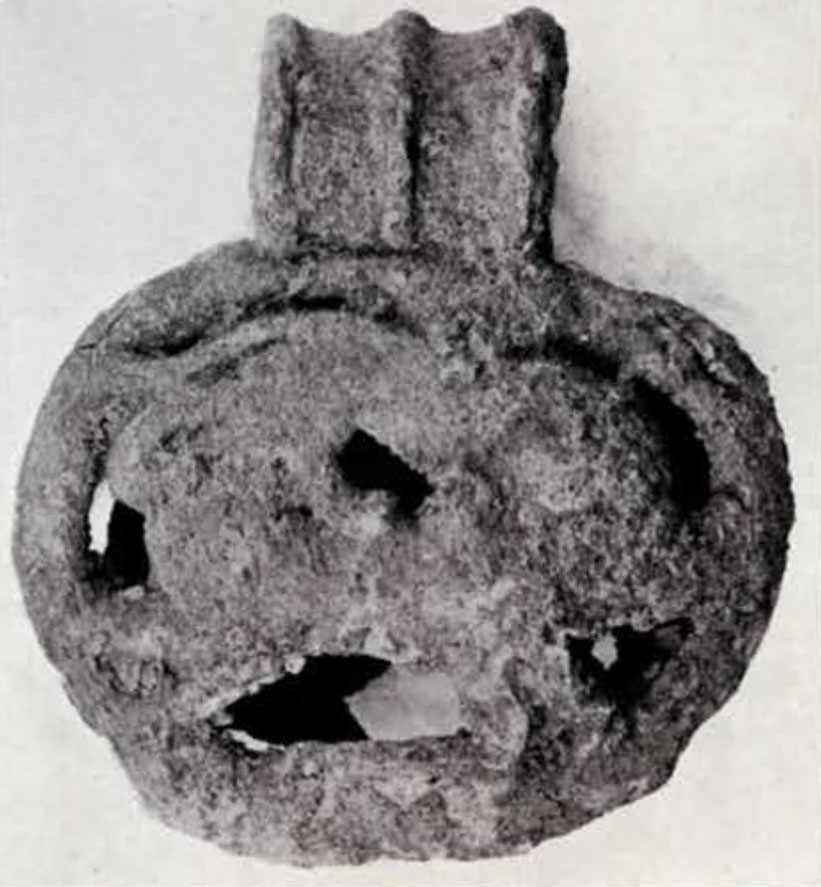
Image Number: 30184, 30185
Room North of Sanctuary
The exact significance of the room to the north of the sanctuary will not be clear until more debris is removed from its eastern end. Except pottery models of a bowl and pot, and basalt weights, nothing much of interest was found in the room.
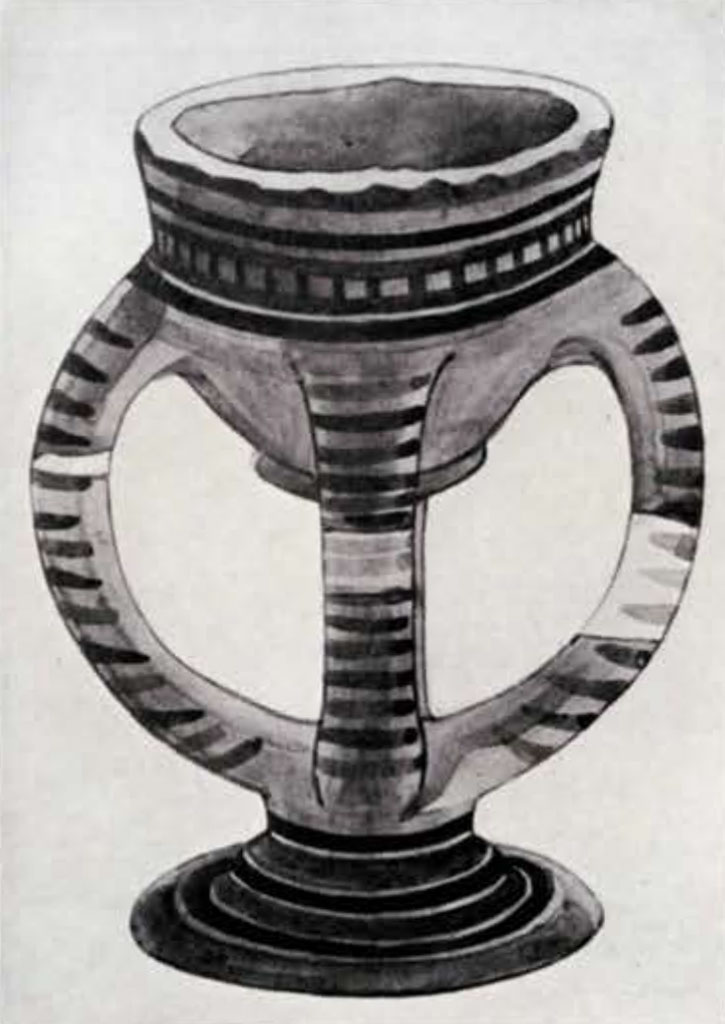
Anteroom, Corridor, and Room West of Corridor
From the anteroom of the courtyard and the corridor to the north of it, came a rosette of gold foil, beads, amulets, and part of the base and foot of an alabaster statuette of a king or god. In a room to the west of the corridor, which is as yet only partially cleared, we have discovered part of a pottery bowl, of a creamish coloured ware, with the figure of a serpent in high relief on its exterior. This bowl. which is the oldest example of a cult object with a serpent on it yet found in Beisan, is of great importance as it shows that ophiolatry, so prevalent in the town during the reigns of Amenophis III, Seti I, and Rameses II, was already practised there in the time of Thothmes III. In the same room were the scarab of Thothmes III previously referred to and a number of other interesting objects some of which are illustrated here. These include fragments of a magnificently painted jar with decorations in dark red and black. On one of the fragments is represented the head of a man with a bearded face, evidently a Canaanite, and on another fragment the head of what appears to be a woman of the same race. The latter has a lock of hair falling down by the side of her left cheek. These portraits are extremely valuable as they give us a picture of the Canaanites in Palestine at-the beginning of the XVth century B.C.
Egyptian Military Standard, Etc.
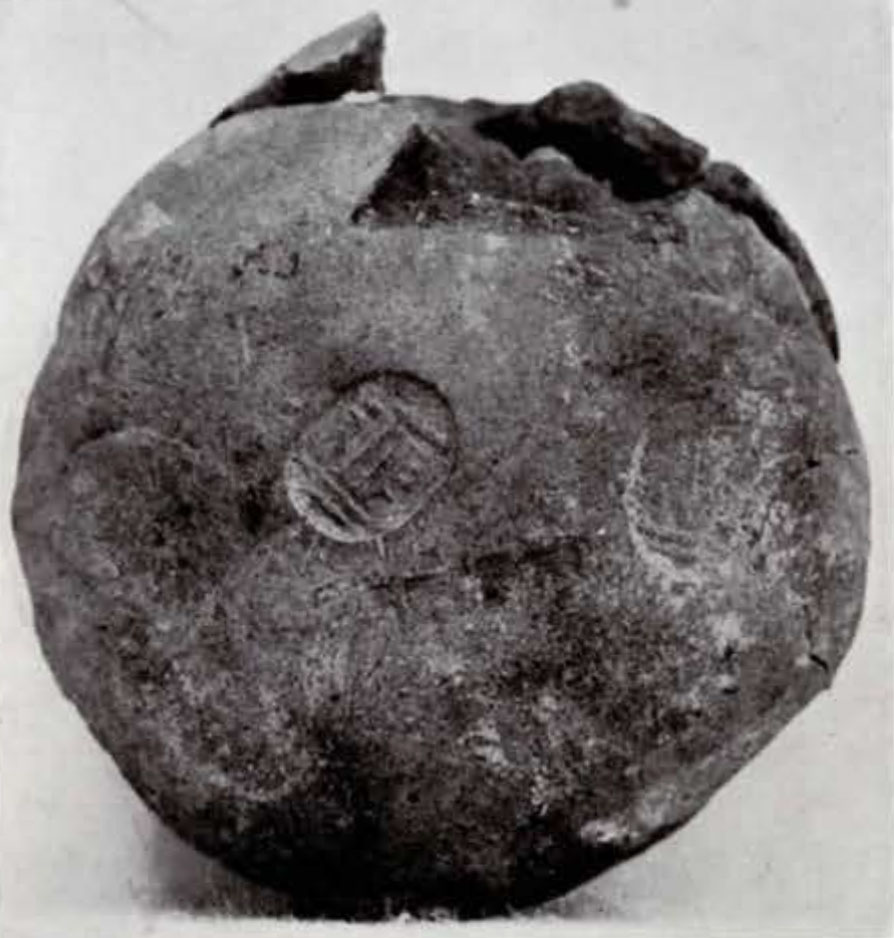
Museum Object Number: 29-104-79
Image Number: 30179
We are now clearing away the upper debris over the eastern end of the temples of Thothmes III and have already found some interesting objects, including scarabs of Rameses II and Amenophis III from the level of Seti I. From the Amenophis III level have come two scarabs of Thothmes III, one gold mounted and the other showing the figure of a sphinx; the head of a figurine of Ashtoreth; and the beautifully made bronze top of a military standard four inches in height, representing the head of Hathor with the horns of a cow and the solar disk on her head. The face has gold foil beaten over it and is well moulded. Behind the object are two staples by which it was fixed to the pole. We also found a cylindrical piece of bronze which was perhaps attached to the base of the pole. In the same room from which the standard head came, which is on the extreme edge of the tell, we discovered a scarab of Rameses II, so it is quite evident that the debris in which the standard head was found had been disturbed in ancient times. An interesting question arises as to whether there was a “Hathor” army division in Beisan in the time of Amenophis III, if the standard head does really belong to the reign of this king, just as we know there was a “Ra” division in the city in the time of Seti I. The latter division is mentioned in the inscription on the stela of Seti found at Beisan in 1923, which states that in the first year of his reign the king sent the division of Amen to the city of Hamath (at the entrance to the Yarmuk Valley), the division of Ra to the city of Beisan, and the division of Sutekh to the city of Yenoam. This is the first mention in the hieroglyphic records of the division of an Egyptian army. We next meet with it in the account of the battle of Rameses II against the Hittites at Kadesh on the River Orontes, in which battle another division, that of Ptah, also took part. Representations of the gods Ra, Amen, and Ptah are engraved on a silver trumpet found in the tomb of Tutankhamen, so it is quite likely that army divisions bearing the names of Ra, Amen, and Ptah were already in existence in the reign of this king. Another object of great value that has just been found in our Amenophis III level is a Hittite cylinder seal of hæmatite. On the seal are represented two deities and also an unidentified animal with a sacred emblem above it. Before the animal is the first of the two deities, who holds some object, perhaps an axe, in his right hand. In front of his head is the Hittite hieroglyph which is believed to mean “god.” Behind the animal is the second deity, who wears a conical cap. Against the back of his head is written the Hittite hieroglyph probably meaning “fort.” In front of the latter deity is an ass, near which is some Hittite hieroglyph as yet undeciphered.
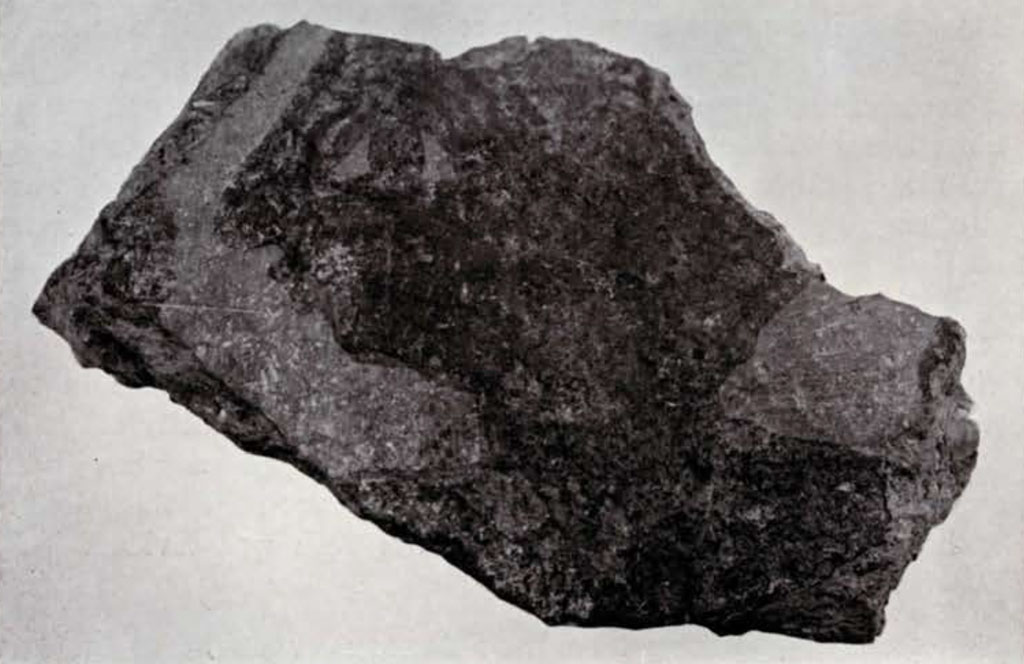
Amenophis III Level
During our excavations in the 1925 and 1926 seasons at the southern part of the tell, we discovered only one level of the date of Amenophis III, but we now find, on the same plane at the northern end of the tell, that there are two levels, an earlier one almost certainly belonging to the time of Amenophis III, and a later one belonging either to the end of his reign or to some era following this event and anterior to Seti I. The later level has been provisionally called “Post-Amenophis III.”
Under a large wall at the eastern side of this level there was discovered a fine Egyptian faience finger ring bearing the sacred eye. This formed part of the foundation deposits that were placed below the main walls of the houses and temple of the level. Two faience cylinder seals showing deer were found on the floor near by. In this connection it is very interesting to note that we unearthed the antler of a deer in the Post-Amenophis III level. Not far from the seals were a painted pottery bull’s head, which may have been the spout of a vessel or an attachment of a kerns (a hollow cylindrical ring used for sacred purposes) and the upper part of a figurine of the goddess Ashtoreth wearing a headdress like Hathor. Other interesting objects from the same area are an unusual type of pottery filter, shaped like a shallow perforated bowl with elongated handle, and a beautifully made ribbed knob of alabaster containing part of a bronze rod in the hole which is bored in its axis.
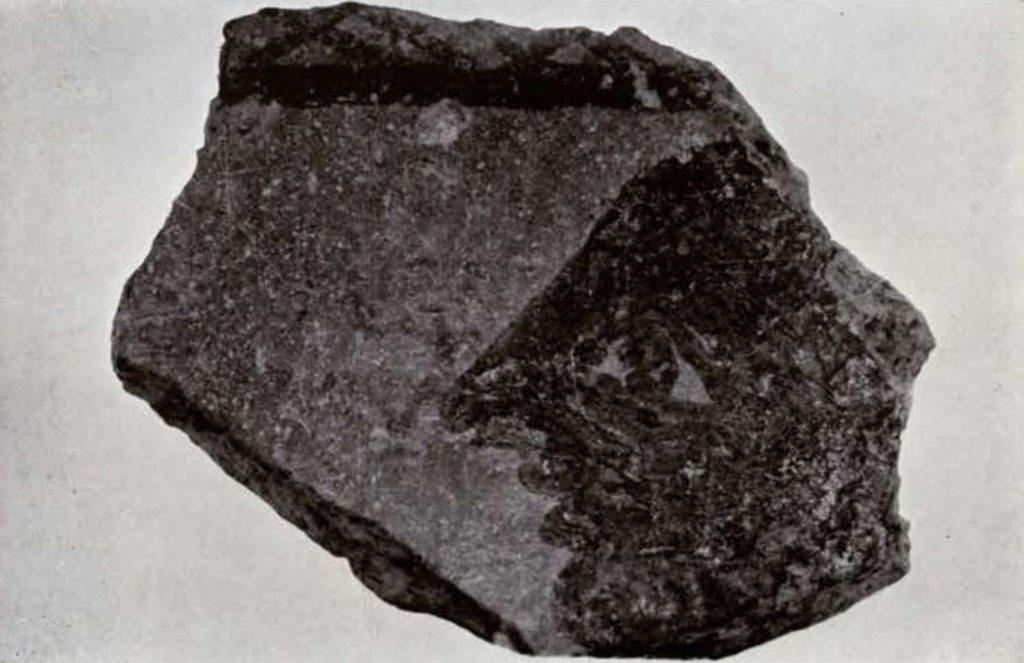
Linear Writing

Image Number: 30185a
The most important find, however, in the Amenophis III level is the handle of a pottery vessel of light brown ware, with two groups of linear signs impressed upon it. This pot is not an importation from elsewhere, but was made and inscribed at Beisan, as its ware is exactly similar to that of hundreds of other pots of the same age found on the site. Pere L.H. Vincent, of Jerusalem, who ha examined these signs, thinks that they belong to some mixed system of linear writing used in the XVth—XIVth centuries B.C. in the Oriental basin of the Mediterranean. The upper group of signs is very similar to certain elements of the Cretan linear writing, while the second group, on the contrary, resembles one of the signs of the Cypriote archaic alphabet. During our excavations in 1925 and 1926 in the Amenophis III level, we had already observed that there was a Mediterranean influence at Beisan, which probably came via Cyprus from Crete and the Ægean regions; and the inscribed pot handle, as well as many other objects including pottery found this year, affords further evidence of the presence of this influence. In addition to the handle with linear signs, we unearthed a number of bowls in the same area with marks on their bases—single strokes, strokes in groups of two, strokes made into crosses, strokes formed into right angles, and so on. (Numerous pot handles with similar marks were found in the Pre-Amenophis III level.) These marks, which are also evidently Eastern Mediterranean in origin, are very much like those found many years ago on potsherds in the earliest levels of Tell el-Hesy, a mound situated sixteen miles east of Gaza. Probably the signs are merely potters’ marks.
Post-Amenophis III Level
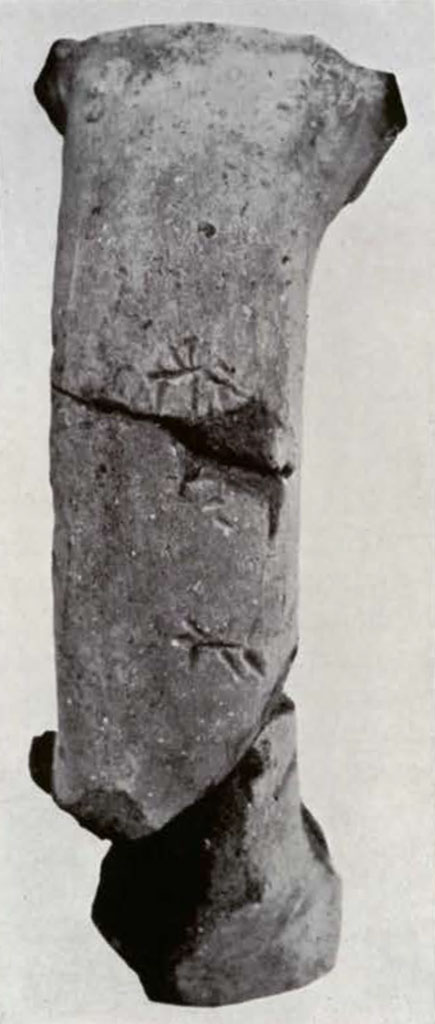
Image Number: 30201
Although but few rooms have yet been uncovered in this level, their contents are rather interesting and comprise a collection of forty bowls and dishes, one with a white plaster-like substance in it, all from one room; a broken figurine of Ashtoreth; and a forked antler six inches in length. This last object shows traces of having been cut or sawed off, but whether this was done while the animal was alive or dead cannot be said. The deer, like the gazelle, was probably a sacred animal and is frequently figured on cylinder seals found on the tell. It is named in Deuteronomy, xiv, 5, as one of the clean animals that the Israelites were permitted to eat, and in I Kings, iv, 23, it is mentioned in the list of game furnished for Solomon’s daily table.
During the present season a large number of rooms belonging to the two levels of Seti I, which date respectively from the early and the late parts of his reign, have been excavated with interesting results.
Early Seti Level
The thirty rooms just cleared out in this level have a narrow street running through them from north to south; this street, in Late Seti times, was paved with small pebbles, a feature which we have not found elsewhere in Canaanite streets on the tell. On the paved street there lay a flint implement and some bones of an animal, perhaps a sheep. One room on the south edge of the mound in the Early Seti level was a granary, while circular ovens of pottery, having traces of ashes in them, were found in various other rooms. One room contained a quantity of pottery jars filled with sesame seed which probably in ancient times, just as it is today in Palestine, was used for making oil for sweets and for sprinkling upon biscuits. In a room to the northeast of the level there is a small manger made of bricks, somewhat similar in appearance to the two mangers for sacred animals found in our temple of Amenophis III during the 1925 season. All these mangers were probably used for gazelles or deer, traces of which animals have come to light in various levels on the tell. On a brick in the Rameses II level, to be referred to presently, we actually found the imprint of the hoof of a gazelle.
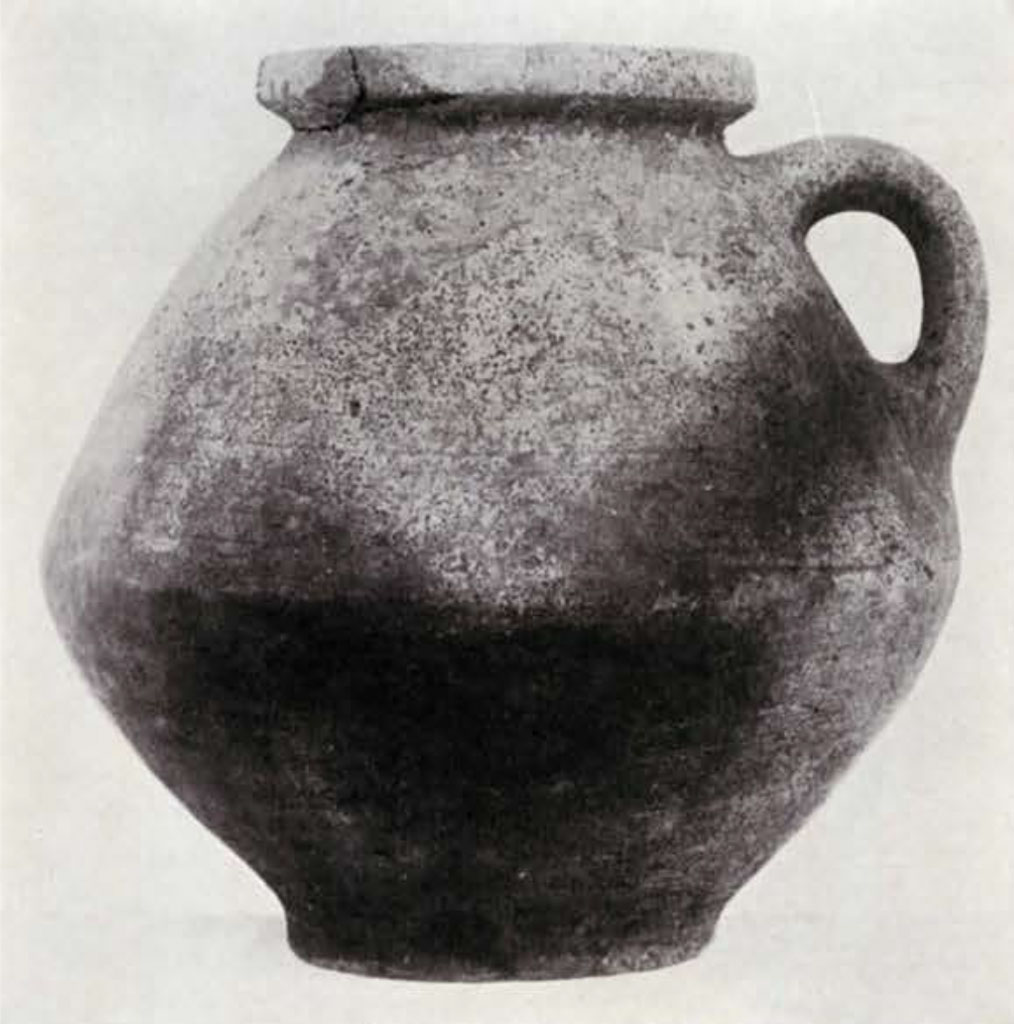
Votive Offering, Child’s Rattle, Etc.
Among other interesting small objects found were a child’s pottery rattle and a pottery wheel, 4½ inches in diameter, which formed part of a model chariot. Doubtless the Canaanite chariot represented by the model was not unlike the earlier chariots referred to in Joshua, xvii, 16, which enabled the Canaanites of Beisan and its valley to repulse the Israelites: “The children of Joseph said, The hill is not enough for us; and all the Canaanites that dwell in the land of the valley have chariots of iron, both they who are of Bethshean and her towns, and they who are of the valley of Jezreel.” As a matter of fact, it was not until about 1000 B.C., when the Philistines were apparently driven out of the fort by King David, that the Israelites took possession of Beisan.
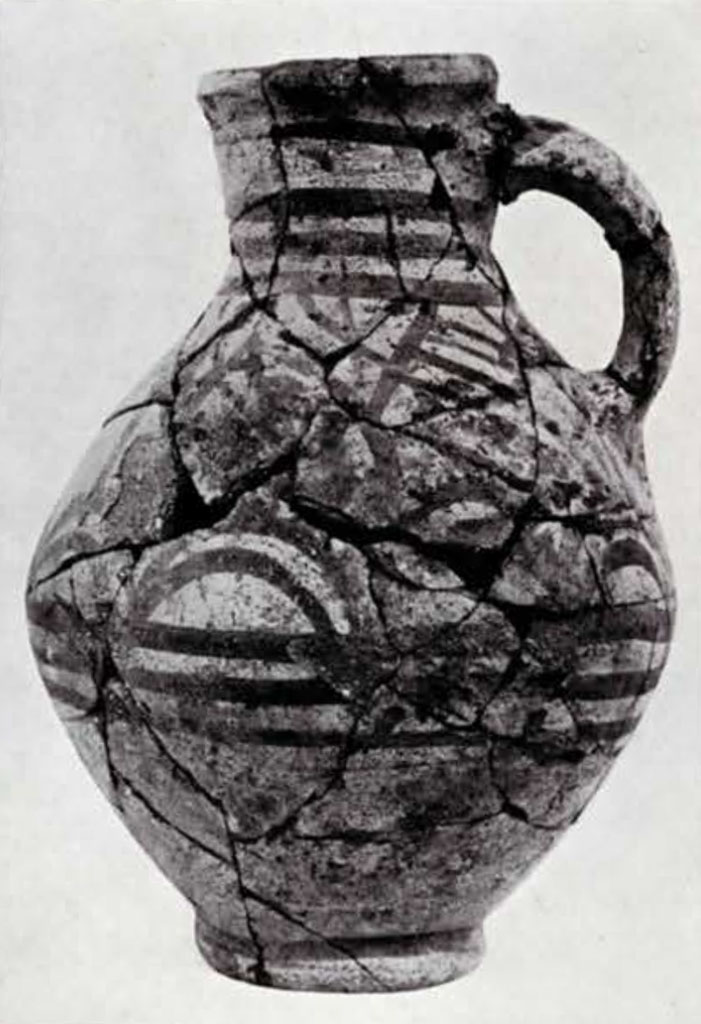
Image Number: 135290
Late Seti Level
The very few rooms of this level found this season were situated above the thirty rooms of the Early Seti level and were built of an inferior kind of brick that almost crumbles at a touch. In some instances small beams of wood were used as foundations for the walls. From one of the rooms came two objects of particular interest, one, a beautifully made axehead of bronze, the other, a conical steatite seal showing two gazelle-like animals. In an adjacent room was discovered a pottery model of the head of an animal, perhaps a horse.
Rameses II Level
The walls of the Rameses II level are the best built of all the walls found on the tell, for they stand upon solid foundations of stone and are made of a very hard kind of brick. In certain places, particularly at the north of the summit of the tell, there is a solid mass of clay, as hard as the bricks themselves and some three feet in height, placed between the stone foundations and the brick walls. Sometimes, however, timber was laid between the stones and the bricks.

Museum Object Number: 29-107-966
Image Number: 135283
Portrait of Builder of Dagon Temple
The level has yielded some very important objects, especially a portion of a door-jamb bearing a portrait of Rameses-Wesr-Khepesh, the builder of the southern temple of Rameses II, which is none other than the “temple of Dagon” of I Chronicles, x, 10, in which the Philistines placed the head of Saul of Israel after he was slain in the battle on Mount Gilboa. During the 1925 season we discovered an inscribed door-jamb beneath the temple, giving the name of Rameses-Wesr-Khepesh, and also part of the titles of his father. The door-jamb found this season supplies the missing titles and the father’s name (Thothmes), and shows Rameses-Wesr-Khepesh himself in a sitting position with his hands raised in adoration. He wears a voluminous linen garment and a headdress. It is interesting to note that one of the sons of Rameses H was called Thothmes, but he cannot be the Thothmes referred to on the door-jamb. By joining together the hieroglyphic texts on the two jambs we get the following inscription: “Overseer of soldiers, commander of the bowmen of the Lord of the Two Lands [i.e., Pharaoh], royal scribe great steward, Rameses-Wesr-Khepesh, the son of the fan bearer at the right hand of the king, chief [of the bowmen, overseer of foreign countries, Thothmes.]” The last words in brackets are those on the newly discovered jamb. It can easily be understood that these stones are of great value, especially when it is realized that we have found for the first time in the history of excavation the name and portrait of the builder of a Canaanite temple mentioned in the Old Testament!

Image Number: 135257
Brick Imprinted with Feet of Child, Dog, and Gazelle
One of the interesting finds in the Rameses II level was a series of nine bricks bearing the impressions of the feet of a child, of about four or five years of age, of the paws of a dog, and of the hoof from a gazelle’s forefoot. These impressions were of course made just after the bricks were fashioned into shape. We compared the imprint of a forehoof of a tame gazelle kept by the District Officer at Beisan with the imprint of the cloven hoof on our brick, and found them to be identical in shape. It is objects such as the above that have a real human interest for us, for we may picture the newly made bricks lying on the brickmaker’s field at the foot of the tell and a little child, accompanied by her two pets, a dog and a gazelle running and skipping about over them. This little episode of three thousand two hundred years ago is as clearly conveyed to us by the imprints on the bricks as if we had found it recorded in writing.
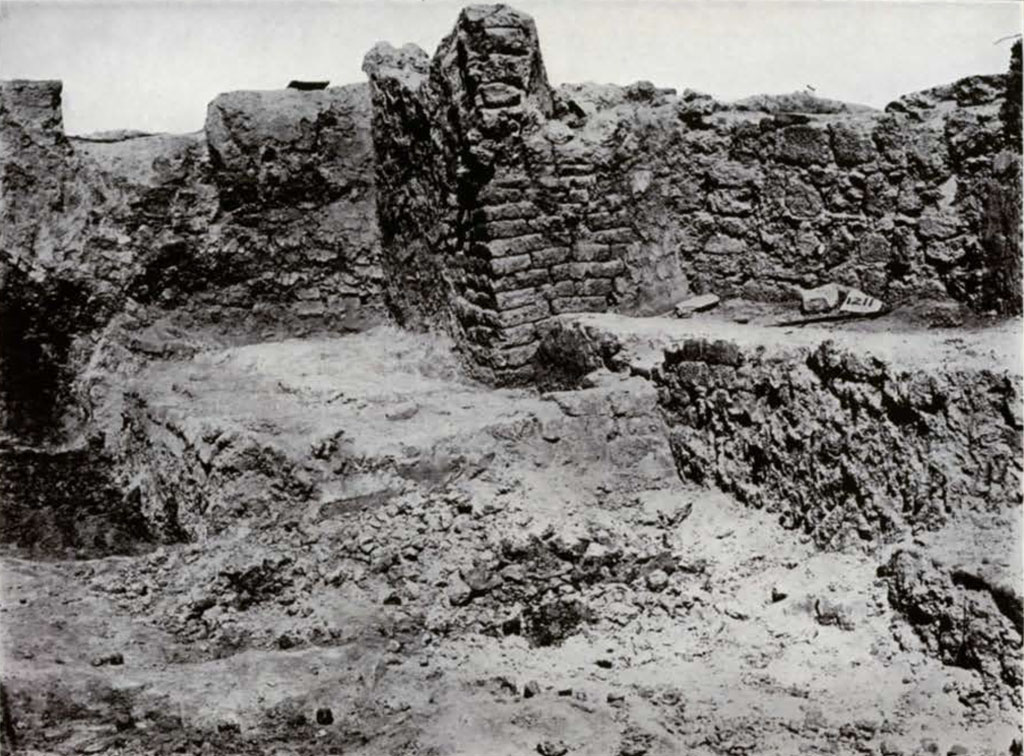
Model of Unknown Deity
From below a wall at the eastern end of the Dagon temple there came an oblong piece of stone, 3¼ inches in height, with the head of a deity at the top. One side of the stone is incised with the figure of a man or god holding a captive whose legs are kicking in the air. Under the former figure is what appears to be a stand with four legs shaped like those of a man. On the other side of the stone is a similar stand surmounted by a man or deity with uplifted arms. This object bears a strong resemblance to certain plaquette idols found in Cyprus.
Four scarabs, one of which bears the cartouche of Rameses II and another that of Thothmes IV, came from the Rameses level. Other objects from the same place include Egyptian amulets and a Canaanite open pottery lamp with single spout.
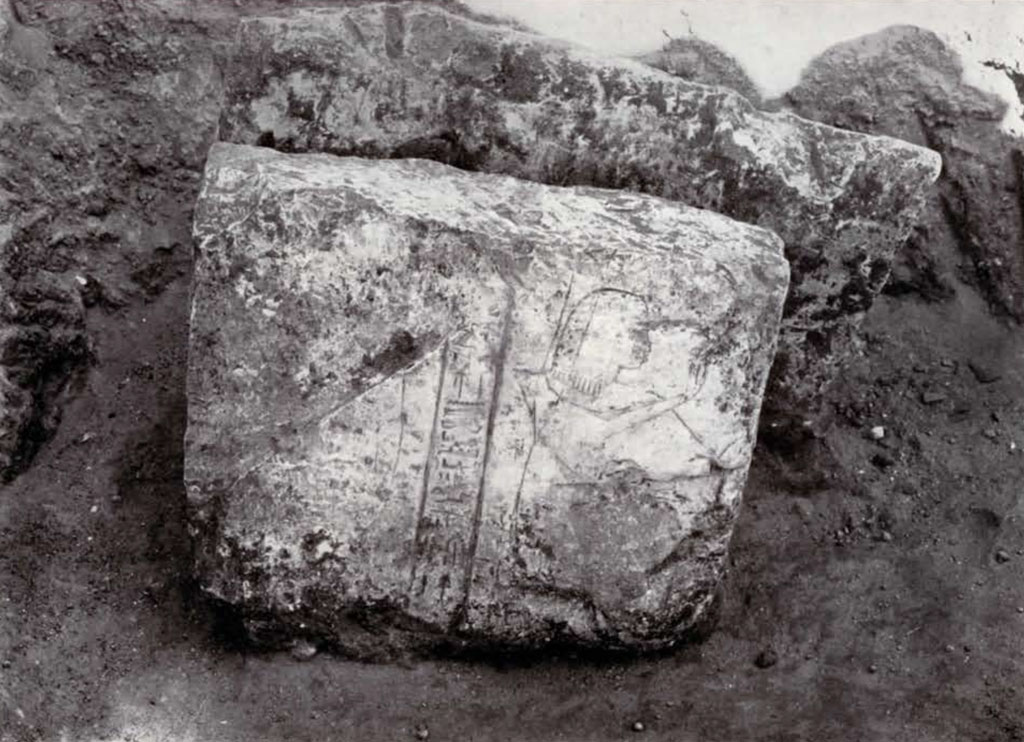
Image Number: 30130
Late Levels
Among the objects from the later levels on the tell may be mentioned fifteen pottery lamps of the cup and saucer type, eight of which have holes leading from the bottom of the cup into the saucer (Late Ramesside level); a bronze coin of Ptolemy Soter I, a bronze coin of Herod Agrippa I, a Roman incense holder of bronze consisting of a tripod cup with handle (Hellenistic and Roman levels); and a bronze coin of the Emperor Justin II, 565-578 A.D., minted at Antioch (Byzantine level).
At the time of writing we are working in the lower Pre-Amenophis III level, which gives every indication of being one of the richest of all the levels on the tell so far as painted pottery and other antiquities are concerned. It will probably be some time before we shall be in a position to clear out completely the new Canaanite temples, as there is still a great mass of debris to be removed from both without and within their walls.
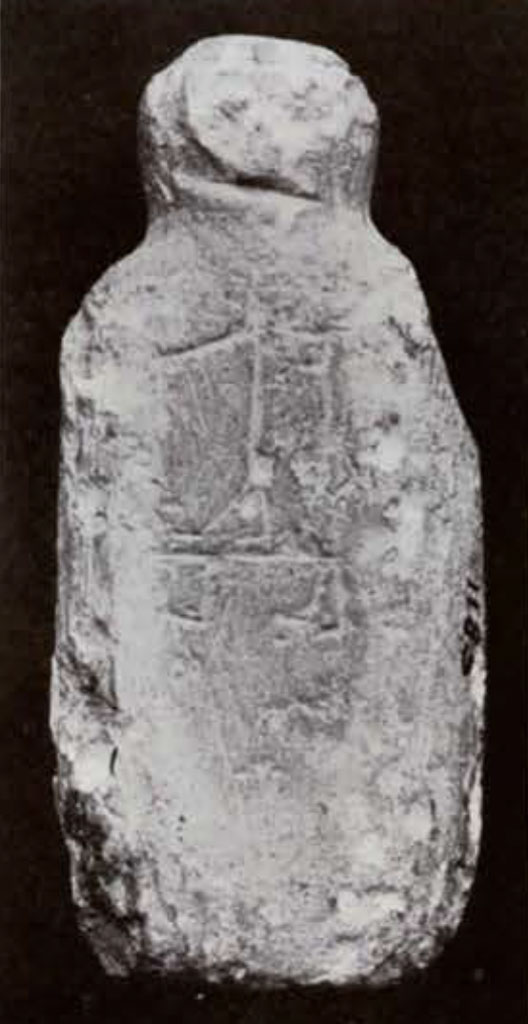
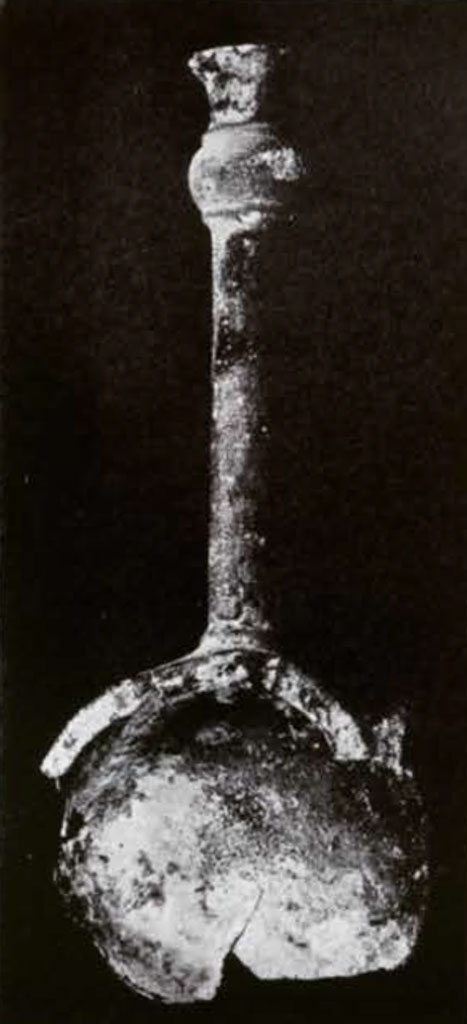
Museum Object Number: 29-108-26
Image Number: 135232

